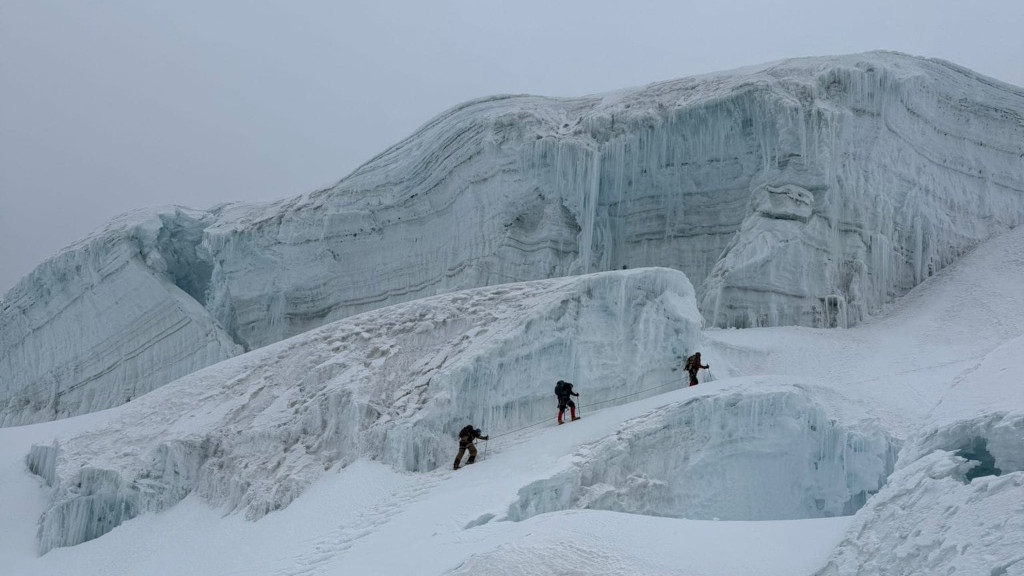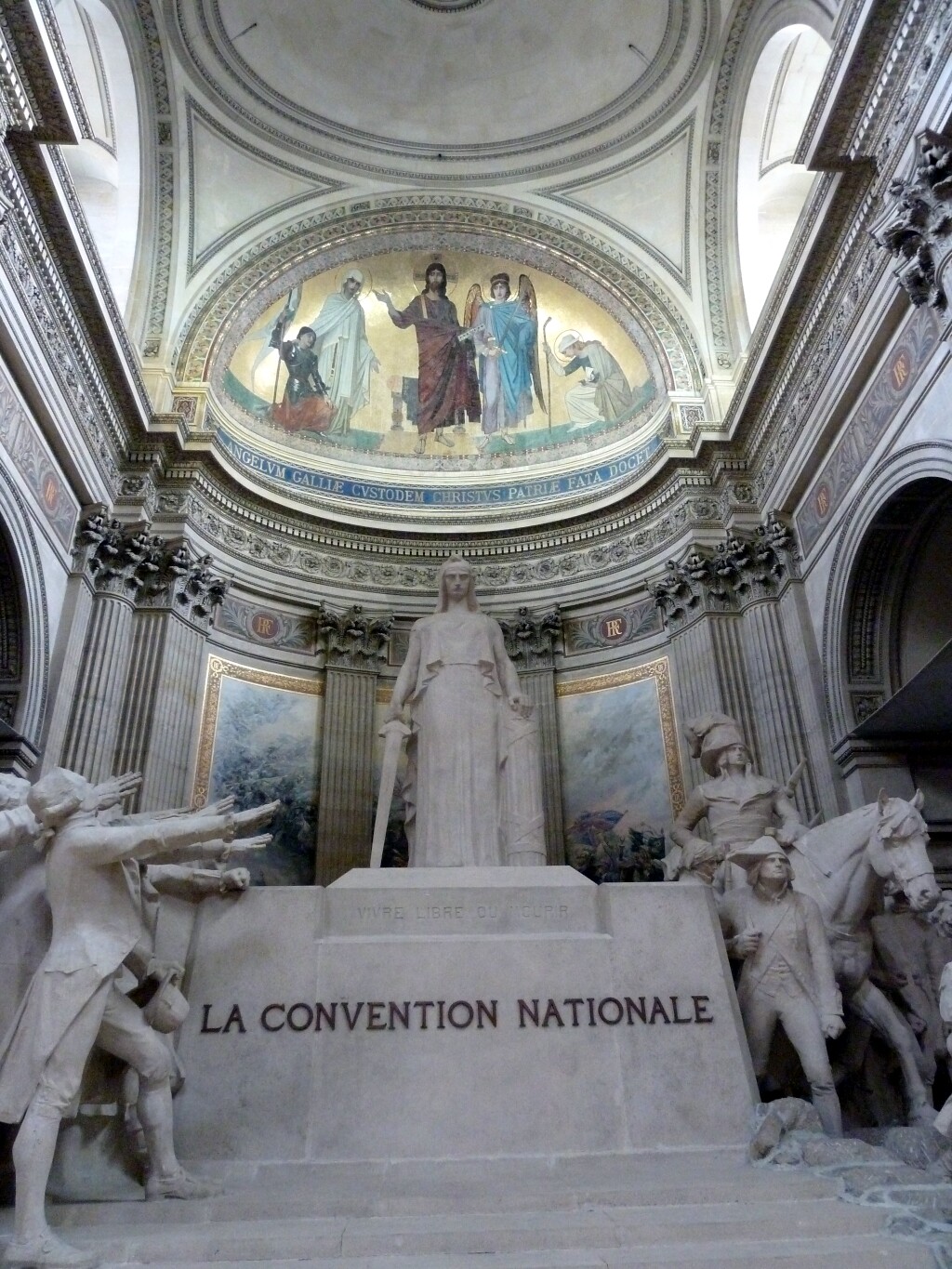
Higher and higher. This tour will take us to three 4000m peaks, two 5000m peaks and one 6000m peak in Ecuador's volcanic landscape.
More
 We wanted to see the Arc de Triomphe not only from La Defénse and took the metro there. Commissioned by the Emperor Napoleon I after the Battle of Austerlitz
and completed in 1836, below it is the Eternal Flame in honor of the unknown dead of World War 1. We strolled down the Champs-Élysées to the Place de la Concorde,
then across the bridge of the Seine to the Dome of the Invalides. The building belongs to the Hôtel des Invalides, a facility that served to care for the war wounded.
Intended as a baroque church and memorial to heroes, in 1840 it became the burial place. Under the beautiful dome is Napoleon's crypt with the red quartzite sarcophagus,
and in a side chapel is the tomb of his brother Joseph Bonaparte. It is to this golden dome that the building erroneously owes its name: Dôme stands for dome, not church.
We wanted to see the Arc de Triomphe not only from La Defénse and took the metro there. Commissioned by the Emperor Napoleon I after the Battle of Austerlitz
and completed in 1836, below it is the Eternal Flame in honor of the unknown dead of World War 1. We strolled down the Champs-Élysées to the Place de la Concorde,
then across the bridge of the Seine to the Dome of the Invalides. The building belongs to the Hôtel des Invalides, a facility that served to care for the war wounded.
Intended as a baroque church and memorial to heroes, in 1840 it became the burial place. Under the beautiful dome is Napoleon's crypt with the red quartzite sarcophagus,
and in a side chapel is the tomb of his brother Joseph Bonaparte. It is to this golden dome that the building erroneously owes its name: Dôme stands for dome, not church.
 Since 1815 Napoleon lived in exile on the English island of Saint Helena. In 1821 he died under mysterious circumstances at the age of 51 and was buried on the
island against his will. According to his doctor, he suffered from stomach cancer. It was not until 1840 that his body was transferred here by order of King Louis-Philippe.
Many other military personalities are buried here. On the large building complex Hôtel des Invalides are today important institutions: among others in the former house
for invalids the military museum, numerous other museums, a hospital and retirement home for war veterans, and the Ministry of Defense.
Since 1815 Napoleon lived in exile on the English island of Saint Helena. In 1821 he died under mysterious circumstances at the age of 51 and was buried on the
island against his will. According to his doctor, he suffered from stomach cancer. It was not until 1840 that his body was transferred here by order of King Louis-Philippe.
Many other military personalities are buried here. On the large building complex Hôtel des Invalides are today important institutions: among others in the former house
for invalids the military museum, numerous other museums, a hospital and retirement home for war veterans, and the Ministry of Defense.
 After the more military part, we moved on to the artistic. Montmartre, a hill in the northern part of the city, is the artists' district. Most of the sights are close to
the center and easily accessible on foot. We took the stairs and stood in front of the Sacré-Cœur Basilica, visible from afar, which graces the top. From here you have a
beautiful view over the city. Passing the church, we dipped into the village charm of the neighborhood. Over cobbled alleys, past colorfully planted house facades and
countless cafes, we visited the famous Place du Tertre only on the way back. Here, right next to each other, the painters show and sell their wonderful work. You
really could not get enough.
After the more military part, we moved on to the artistic. Montmartre, a hill in the northern part of the city, is the artists' district. Most of the sights are close to
the center and easily accessible on foot. We took the stairs and stood in front of the Sacré-Cœur Basilica, visible from afar, which graces the top. From here you have a
beautiful view over the city. Passing the church, we dipped into the village charm of the neighborhood. Over cobbled alleys, past colorfully planted house facades and
countless cafes, we visited the famous Place du Tertre only on the way back. Here, right next to each other, the painters show and sell their wonderful work. You
really could not get enough.
 The names of great painters who worked here is long: Picasso, Miró, Manet, Toulouse-Lautrec, Renoir, Van Gogh ... Later walked downstairs to the world-famous vaudeville
Moulin Rouge. The red mill on the roof of the building is perhaps to refer to this old windmill district. There were large gypsum deposits in Montmartre, and in the 16th
century windmills were built to grind it. Later also for grinding grain, in the 18 Jhd. still 12 mills are said to have graced Montmartre, today there are still two. On
the last day we walked first on the roof terrace department store Printemps on the Boulevard Haussmann and got a wonderful panoramic view of the city. Afterwards
we ran again past the Louvre over the Seine to the glory temple of the nation, the Panthéon.
The names of great painters who worked here is long: Picasso, Miró, Manet, Toulouse-Lautrec, Renoir, Van Gogh ... Later walked downstairs to the world-famous vaudeville
Moulin Rouge. The red mill on the roof of the building is perhaps to refer to this old windmill district. There were large gypsum deposits in Montmartre, and in the 16th
century windmills were built to grind it. Later also for grinding grain, in the 18 Jhd. still 12 mills are said to have graced Montmartre, today there are still two. On
the last day we walked first on the roof terrace department store Printemps on the Boulevard Haussmann and got a wonderful panoramic view of the city. Afterwards
we ran again past the Louvre over the Seine to the glory temple of the nation, the Panthéon.
 Originally intended as a church in honor of the city's patron saint, Sainte-Geneviève, after the French Revolution people no longer had much interest in churches
and turned it into a memorial to 81 great Frenchmen. In the basement there are countless chapels with names like Voltaire, Rousseau, Victor Hugo, Pierre and Marie Curie,
Emile Zola, Alexandre Dumas, Louis Braille and many others. The model for the building in the classicist style was the Pantheon in Rome, it has a Greco-Roman temple façade,
a columned dome and a huge interior. Between a myriad of columns, one can see monumental sculptures and paintings that capture important moments of French history.
Originally intended as a church in honor of the city's patron saint, Sainte-Geneviève, after the French Revolution people no longer had much interest in churches
and turned it into a memorial to 81 great Frenchmen. In the basement there are countless chapels with names like Voltaire, Rousseau, Victor Hugo, Pierre and Marie Curie,
Emile Zola, Alexandre Dumas, Louis Braille and many others. The model for the building in the classicist style was the Pantheon in Rome, it has a Greco-Roman temple façade,
a columned dome and a huge interior. Between a myriad of columns, one can see monumental sculptures and paintings that capture important moments of French history.
 From the center of the beautiful 83 m high dome hangs the famous Foucault's pendulum. It was used in 1851 to empirically prove the rotation of the earth. Exhausted by the
wealth of impressions, we spent the evening in the Jardins du Trocadéro on the opposite bank of the Seine from the Eiffel Tower. From there one has a beautiful view of the
illuminated tower. 20,000 LED lamps make the tower glow beautifully for five minutes at the beginning of every hour from dusk until 1 a.m. But be careful with the photos,
these are only for private purposes, then there's no problem. Otherwise it is more difficult in France with image rights. There is no freedom of panorama as there is here.
From the center of the beautiful 83 m high dome hangs the famous Foucault's pendulum. It was used in 1851 to empirically prove the rotation of the earth. Exhausted by the
wealth of impressions, we spent the evening in the Jardins du Trocadéro on the opposite bank of the Seine from the Eiffel Tower. From there one has a beautiful view of the
illuminated tower. 20,000 LED lamps make the tower glow beautifully for five minutes at the beginning of every hour from dusk until 1 a.m. But be careful with the photos,
these are only for private purposes, then there's no problem. Otherwise it is more difficult in France with image rights. There is no freedom of panorama as there is here.
 Freedom of panorama means that copyrighted works that can be seen from public thoroughfares may be reproduced pictorially without permission. The Eiffel Tower belongs to the
city, but its illumination by a private company is light art with copyrights. Similarly with the Louvre Pyramid: it is not allowed to depict this pyramid as the main object
in a photograph because the copyright holder has not been dead for 70 years. This can only be circumvented if both are not the main focus of the shot. But there is a lot of
room for interpretation. A circus 🙂. At night we then drove to Charles de Gaulle Airport, au revoir beautiful Paris.
Freedom of panorama means that copyrighted works that can be seen from public thoroughfares may be reproduced pictorially without permission. The Eiffel Tower belongs to the
city, but its illumination by a private company is light art with copyrights. Similarly with the Louvre Pyramid: it is not allowed to depict this pyramid as the main object
in a photograph because the copyright holder has not been dead for 70 years. This can only be circumvented if both are not the main focus of the shot. But there is a lot of
room for interpretation. A circus 🙂. At night we then drove to Charles de Gaulle Airport, au revoir beautiful Paris.

